Of all the types of lilies, Asiatic lilies these are the first to bloom, before the fragrant Orientals. They are cold hardy, relatively pest free, and do not need staking. Asiatic lilies make great cut flowers and have the broadest color range: pink, orange, yellow, red, cream, white, and lavender with various marks and spots on the petals. Usually, flowers are not fragrant but large, 4 to 6 inches wide, upward facing, outward facing, or pendant. Each flower has six petals and prominent anthers and stamens. They bloom at the top of the stems. Average stem height is 30-36 inches and there are dwarf sizes, perfect for containers. These plants are grown by bulbs, which are planted in the spring or fall for a spring to early summer show. The plants are toxic to dogs and especially toxic to cats. Deer and rabbits enjoy lilies with no ill effects.
Plant Attributes
| Common Name | Asiatic lilies |
| Botanical Name | Lilium asiatica |
| Family | Liliaceae |
| Plant Type | Perennial, Bulb |
| Mature Size | 30-36 in. tall, 8 in. wide |
| Sun Exposure | Full |
| Soil Type | Well-drained |
| Soil pH | 5.5-7.5 |
| Bloom Time | Spring, Summer |
| Flower Color | Red, Pink, Orange, Yellow, Purple, White |
| Hardiness Zones | 3-9 (USDA) |
| Native Area | Asia |
| Toxicity | Toxic to cats and dogs |
Asiatic Lily Care
It is always best to purchase bulbs from a reputable bulb company to obtain large, healthy bulbs and to ensure that you are getting the desired cultivar. Plant the bulbs in the spring or fall at 3 times the height of the bulb deep in well-drained, loamy soil. Plant so the flat end is down, and pointy end is up. Space about 8 inches apart. Water well after planting. These are full sun plants but they prefer if their roots are cooler so you may want to “shade” the soil by mulching or other plants.
The green stems will emerge in the spring. Fertilize with a 10-10-10 or special bulb fertilizer when buds appear. The plant does not like to dry out so ensure that it gets adequate water in the spring and summer. As it flowers, remove spent blossoms with snips unless you want to save the seeds for propagating. When the plant finishes flowering, leave the foliage as is. By fall, the foliage will become unsightly and can be cut down to the ground. The plant will become dormant in the winter.
| Light | Full sun |
| Soil | Well drained, loamy soil |
| Water | Needs a steady supply of water, maybe 1 to 2 inches a week during hot summers. |
| Temperature | Warm temperatures, is a summer blooming plant |
| Humidity | Moderate |
| Fertilizer | Fertilize in spring with a 10-10-10 or a fertilizer made for bulbs. Supplemental fertilizer may be needed in the summer. |
Types of Asiatic Lilies
There are many cultivars available including dwarf sizes at 2 feet. The North American Lily Society conducts an annual popularity poll where members vote on their favorites. For 2022, Purple Marble is the favorite Asiatic. Hotel California, Viva la Vida, and Kaveri are favorite Oriental-Asiatic hybrids. They also have a Hall of Fame: lilies that scored first in the popularity poll for 3 years. The Hall of Fame Asiatics are Connecticut King, Enchantment, and Red Velvet.
In addition to Asiatics, there are Oriental-Asiatics that combine the color range of Asiatic flowers with the larger, scented flowers of Orientals to produce plants that are about 3 to 4 feet tall with fragrant flowers. Asiatics also are bred with L. longiflorum (the fragrant white Easter lily) to produce Longiflorum-Asiatic or LA hybrids. LA hybrids are fragrant and about 4 feet tall. Although they are winter hardy, they are recommended for southern states as they perform well in very warm weather.
Pruning
Unless you want to save the seed for propagating, it is best to deadhead spent flowers. In the fall, when the stems and foliage are unsightly, can cut back to the ground.
Propagating Asiatic Lilies
Propagating is done after the mother bulb has bloomed, usually in late summer to fall. The advantage to propagating is that the offspring will be clones, i.e., identical to the mother bulb. Therefore, you can multiply the number of plants you have in the garden. Also, the offspring will mature quickly to flower. The downside is that viruses are transmitted through clones. There are several ways to propagate an Asiatic lily.
Divide the Bulb
In late summer, after the blooming period, you can lift the bulb and see that it has produced new little bulbs. Detach these, ensuring that each has at least one growing point with a new cluster of little scales. Replant the mother bulb and baby bulbs in the garden bed immediately.
Propagate by Scales
At the end of summer or in the fall, when the plant has died down, dig down and remove a few scales from the mother bulb. The bulb is comprised of scales, which are really modified leaves. Keep the mother bulb in the garden bed but remove a few scales to plant in a small container. Space the scales about an inch apart, pointed upward, and cover with potting mix about 1-2 inches. Water and put in part shade. In 6-8 weeks, tiny bulbs will form. Eventually you will pot up the bulbs to their own containers and let grow indoors during the winter. Plant in the garden bed the following year.
Propagate by Bulblets
In the fall, dig up the plant to harvest bulbs, called bulblets, growing along the stem of the plant, between the mother bulb and what would have been the surface. Pull them off, ensuring they have some roots, and pot up in a small container. Replant the mother bulb. Let the bulblets grow indoors in containers and plant outside in the garden bed the following year.
How To Grow Asiatic Lilies From Seed
Asiatic lilies are sold as bulbs, there are no commercial seeds. However, you can grow lilies from the seed produced on your plants. Keep in mind that you will not get clones because your plants are cultivars or hybrids. The original characteristics of the mother plant, such as flower color and shape, may not exist in the progeny. Also, it will take a few years for the plant to mature enough to flower. The upside is that viruses are not transmitted through seed.
In the summer, collect seed when the seed pod opens. Store the seed in a cool, dry place out of sunlight. Sow indoors the following spring in commercial seed starting mix, under lights, much like starting tomato seeds. Cover lightly with the potting mix. Water and keep the mix moist until the seed germinates. The seedling will look like a blade of grass. As it emerges, water a little less. When danger of frost has past, repot each seedling into its own small container and put outside in the shade to harden off. Small bulbs will form below the soil. In the late summer, early fall, transplant the bulbs to the garden bed.
Potting And Repotting Asiatic Lilies
Asiatic lilies are ideal for containers. They are relatively short, don’t need staking, plus there are dwarf varieties. Using a container that has drainage holes, fill with potting mix, and place the bulbs about 6 inches below the rim. Space the bulbs to have one standard bulb or 3 dwarf bulbs in a 7-inch diameter container or about 2 inches apart and cover the bulbs. The container will dry out faster than garden beds so you may have to water as it gets warmer.
Overwintering
Asiatic lilies can be grown in the garden bed or in containers. If grown in the garden bed, they can stay in the ground during winter. Mulch with straw, pine needles, salt hay, or leaves. If grown in containers, either the containers must be moved to a frost-free area or lift the bulbs before winter. The bulbs can be divided and stored to be re-planted in the container the next year.
Common Pests And Plant Diseases
One of the most common pests is the red lily leaf beetle which feeds almost exclusively on lilies. The ¼ inch long, scarlet red beetle appears in April and May. Eggs are orange brown, in rows under the foliage. Hatching from the eggs are small, dark larvae that look like slugs. The larvae feed on the foliage and move down to the soil to pupate. Later, they emerge as adult beetles. By decimating the foliage, the plant may not generate enough energy to replenish the bulb, thus the plant can die.
Look for the beetles in the spring when the lilies emerge. Drop the beetles in a bucket of soapy water or crush them. Destroy the eggs by squishing with your fingers. If you see larvae, drop into soapy water, squish, or spray with neem or Spinosad.
Slugs enjoy the emerging shoots in the spring. Sprinkle the area with diatomaceous earth. Aphids also enjoy new growth but will aim for the buds. Spray with water from the hose or spray an insecticidal soap. Aphids transmit viruses so it is important to get rid of them.
Diseases
There are several viruses that attack lilies: cucumber mosaic virus, tulip breaking virus, lily mottle virus, lily streak virus, and lily symptomless virus. There is no cure for viruses; you must trash the plant (not compost) and disinfect your tools.
There are two common types of fungal diseases: botrytis and basal rot. Botrytis occurs during wet, humid days with little air circulation. Lower leaves may turn brown, and the rest of the foliage will look limp. You can spray with a fungicide and try to replant in an area with better air circulation. Basal rot is where the basal plate, the under part of the bulb, is affected. The leaves become yellow, there is stunted growth, and the plant may die. The mother bulb may not recover but you may be able to divide and obtain younger bulbs or scales that have not been affected yet. Next time, avoid over fertilization, increase the soil drainage, and apply mulch.
Common Problems With Asiatic Lilies
Of all the lilies, Asiatic lilies are considered the easiest to grow. If planted correctly there should not be any issues. A common complaint is that the flowers produce a lot of pollen that stains the hands as well as tablecloths. To prevent a mess, cut out the anthers as soon as the bud begins to open and before the pollen forms. This will not damage the plant or the blossom.
There are few to no flowers this year.
This can be caused by several reasons: 1) the foliage and stems were cut after the plant flowered; therefore, the plant could not photosynthesize and replenish the energy spent that year; 2) the plant is in too much shade; 3) the bulb is too small which can occur if propagating from a bulblet or scale; 4) there was no cold period. Asiatic lilies need the cold winter to bloom; and/or 5) too much nitrogen fertilizer was applied thus encouraging foliage production, not flower production.
The foliage is turning yellow and dying.
If this is happening from spring to summer, it is likely that it is being overwatered or there is not enough drainage. Water less and see if the soil is a well-draining type or has too much clay. If this is happening in the fall, it is a natural process of becoming dormant. Plants will look like they are dying in the fall because they are becoming dormant for the winter and at this point it is okay to cut the stems off at ground level.
Was this page helpful?
Thanks for your feedback!
Tell us why!
Related Articles
How To Grow And Care For Columbine Plants
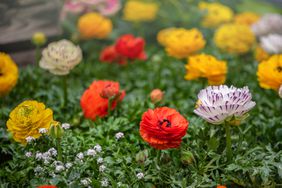
How To Grow And Care For Ranunculus (Persian Buttercup)
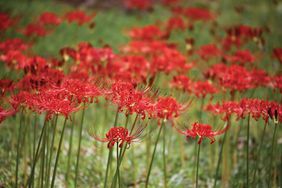
How To Grow And Care For Spider Lilies
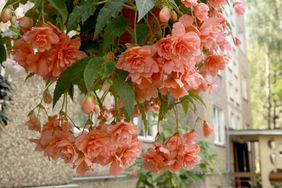
How To Grow And Care For Begonias
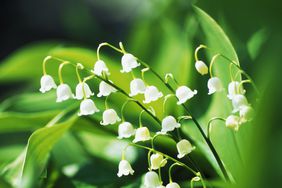
How To Grow And Care For Lily Of The Valley

How To Grow And Care For Chaste Tree
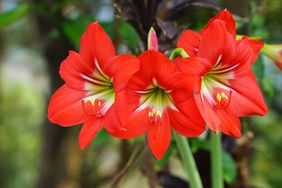
What To Do With Amaryllis Bulbs After They Bloom

How To Grow And Care For Pampas Grass

How To Grow And Care For Heuchera
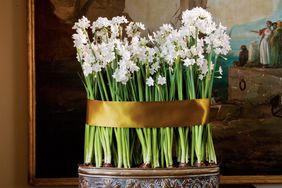
How To Grow And Care For Paperwhites
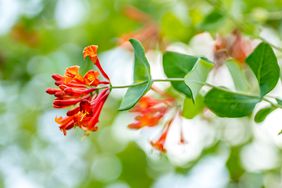
How To Grow And Care For Common Honeysuckle

How To Grow And Care For Snapdragons

15 Bulbs To Plant This Fall For Beautiful Blooms Next Spring

How To Grow And Care For Mums (Chrysanthemums)

Beware! These Are The Plants You Should Never Plant In The Fall
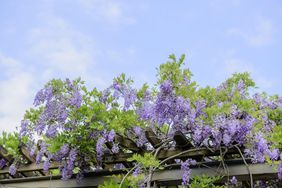
How To Grow And Care For Wisteria
Newsletter Sign Up
Newsletter Sign Up
We Care About Your Privacy
We and our 1609 partners store and/or access information on a device, such as unique IDs in cookies to process personal data. You may accept or manage your choices by clicking below, including your right to object where legitimate interest is used, or at any time in the privacy policy page. These choices will be signaled to our partners and will not affect browsing data.
We and our partners process data to provide:
Store and/or access information on a device. Use limited data to select advertising. Create profiles for personalised advertising. Use profiles to select personalised advertising. Create profiles to personalise content. Use profiles to select personalised content. Measure advertising performance. Measure content performance. Understand audiences through statistics or combinations of data from different sources. Develop and improve services. Use limited data to select content.